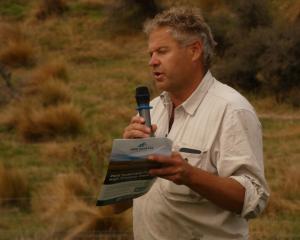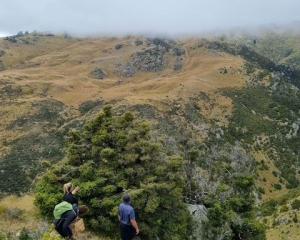Phoenix Aviation Maintenance aircraft engineer Peter Kempthorne, his team and Mr Sutherland are working on the project at the Gore airfield.
Mr Sutherland is the former owner of Sutherland’s Tranport in Waikaka.
After working with diesel fueled trucks all his life he valued diesel engines, Mr Sutherland said.
“I’ve always thought why couldn’t you get a diesel engine into a top dressing aircraft.”
He bought a 1982 Fletcher FU 24 top dressing plane in 2012 with the intention of replacing its turbine engine with a diesel one.
He starting researching how to do that and eventually after a couple of false starts found a company in Germany which made diesel aircraft engines
He and Mr Kempthorne consulted Flight Structures design certification engineer Murray MacGregor of Hamilton who completed the calculations to make sure what they had planned would work.
They employed Mr MacGregor so the aeroplane met Civil Aviation Authority of New Zealand requirements, Mr Kempthorne said.
“We have to do it to a standard so it can be duplicated.
“It’s not a one off.
“You call that a modification.”
The pair believed the plan was that good others in the industry will benefit from it.
“It’s an improvement and we think this needs to be able to be duplicated as a continuing improvement,” Mr Kempthorne said.
The V12 500 horsepower diesel engine ran equally as well on diesel or Jetfuel A1 which was similar to kerosene, Mr Sutherland said.
"It would run very nicely on diesel which is a much cheaper option than Avgas (aviation fuel)... but there is no quality control on diesel so Civil Aviation won’t allow it."
The Fletcher’s former 400hp engine used 110 litres of Avgas an hour when it was working but the new engine would use 80 litres of jet-fuel an hour.
"The engine is inherently more economical."
If the aircraft carried less fuel it was lighter and it would be able to carry more fertiliser.
Not only did the new engine use less fuel but Jetfuel was cheaper than Avgas.
Any savings which could be made in fuel were welcome given fuel costs were rising and fertiliser still need to be spread on farms, they said.
The aeroplane could also be used for sky diving.
Test pilot Bill O’Connor had already taken the aeroplane on two flights and the results looked promising, they said.
While there were overseas companies that manufactured aeroplanes with diesel engines there were none in New Zealand, they said.
Mr Sutherland was now waiting for Civil Aviation Authority certification so the aircraft could be put to work, he said.
- Sandy Eggleston















